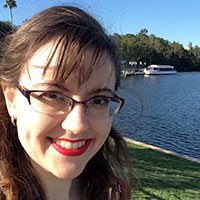By Shelley Harris, Children’s Librarian
October is the month especially set aside to celebrate and recognize various disabilities, including Augmentative and Alternative Communication Awareness Month, something dear to my heart as my brother uses a communication device to speak, and Down Syndrome Awareness Month, dear to Miss Jenny’s heart because of her niece.
But that’s not why we celebrate. We celebrate because communities are much richer when everyone is part of them. We raise awareness because people don’t always realize whose voices are missing. Find a few ways to celebrate together below!
Read these books
So often, people limit themselves to reading about “others” during special months, or, perhaps, only reading books with disabled characters when they or their child will interact with a disabled child. These books are most often about a disabled character, without being from their perspective.
This does everyone a disservice, disabled or not. The best awareness is to meet and know disabled people, in real life and in books. To understand that everyone can be a hero, it’s important to read books where people who do not look or live like you are the heroes.
- Every October, we refresh our Disability Reads bibliography for kids. The books selected for this list feature disabled kids telling their stories and experiences, in ways that acknowledge that disabled children are part of reading audiences. Many of them were written by disabled creators.
- We also have a handout to use together to determine if a book about a disabled character features good representation, or if it is harmful to a disabled reader and perpetuates stereotypes. The handout is for families, caregivers, and teachers, and children as young as preschool have successfully used it to analyze books!
Attend this virtual event
We love to offer inclusive programming all year long, but especially in October. This year, we’re hosting a viewing of Calvin Can’t Fly, which features voiceover, American Sign Language, enhanced text, music, sound effects, and animation, to make it accessible to a wide audience of children. It’s followed by a fun, interactive theater game with sign language. This program has something for all children!
What else can you do?
Start conversations with your kids! This article has so many wonderful ways to learn more about disabled experiences. The focus of the article is the ways that society puts up barriers to inclusion, rather than what some people can’t do.
After reading the article, look around you and find what can be changed rather than try to pretend to have a disability and only see the challenges. How many stores have a step to go up or down to enter? Does a store have a doorknob that is hard for some to grip, a lever that is easy to push, or doors that open on their own for everyone? Are the sidewalks clear for wheelchairs, or are there tables and chairs set up that block the walkway? What can you do about these unfair things when you see them?
And of course, check out these videos that show multiple ways to communicate and have fun!

About Shelley
Shelley is a children’s librarian with a passion for early literacy, serving and celebrating the disability community, and exploring technology. She can often be found practicing storytime songs with her black lab, Bingo.

